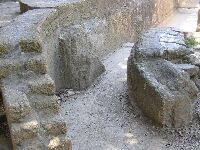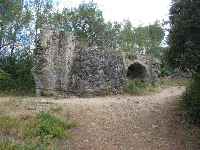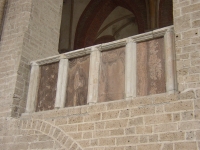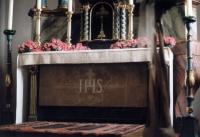



Incrustation
Another problem was incrustation, which occurred at varying rates according to the hardness of the water. Polishing the cement in the channel served to alleviate this problem somewhat, but deposits of calcium carbonate and lime carbonate (also known as sinter) could choke the channel by as much as 50%. Pipes were an even bigger problem, as a pipe is likely to be full any layer of deposit reduces the cross-section by the square of the reduced diameter. Thus sinter had to be removed more often from pipes than from channels. If the pipe consited of lead, this was easy. According to Fahlbusch, lead pipes could be cut open, the sinter broken out, and the pipes soldered closed again (Hodge, 1991:8). Fahlbusch also speculates that boiling vinegar might have been used to remove sinter(Hodge, 1991:9).Interestingly, the incrustation of sinter could become so thick that it was sometimes cut and used in construction. In appearance it is very much like travertine and was often used in churches as a decorative veneer. Noteworthy examples of this are the altar in the church of Kreuzweingarten near Cologne and a headstone in the cemetery of the same. The headstone dates to 1964 A.D. (Hodge, 2002:233).
The incrustation of sinter provides another benefit for the historian and archaeologist; sinter can be used for comparative dating, much like tree-rings can be used (Hodge, 2002:99). The information that can be extracted is, of course, limited to the last removal of the sinter. This at least places boundaries on dating, and while not providing an accurate date, certainly improves any estimates.
From the thesis of Evan J. Dembskey on The aqueducts of Ancient Rome